On the 26th and 27th of February, 2020, I had the opportunity to attend the Forward Marketing Summit in Sydney, Australia. The Summit is Australia’s leading marketing, data and MarTech conference, bringing together specialists from many fields, including digital marketers, data scientists, analysts and business leaders to share insights into current and future marketing trends, strategies and technologies.
Over the two days I attended a number of seminars and panels on a number of marketing topics, but for ease of purpose I’ve split the information from the summit into three distinct categories; Marketing Technology and Innovation, Brand Marketing and Ecommerce. I have also added my own thoughts around topics to give each topic more substance.

AD BLOCKERS
Did you know that in Australia around 46% of people browsing the Internet use an ad blocker? While it’s hard to accurately judge due to browsing styles, mobile devices and bandwidth limitations, it’s estimated that globally in 2019, around 30% of all Internet users had an ad blocker. The demand is so strong that Google released its own Chrome ad blocker in July 2019. The main takeaway from this must be that we can’t simply rely on traditional advertisements for digital marketing, as a large number of end users will never see our efforts.
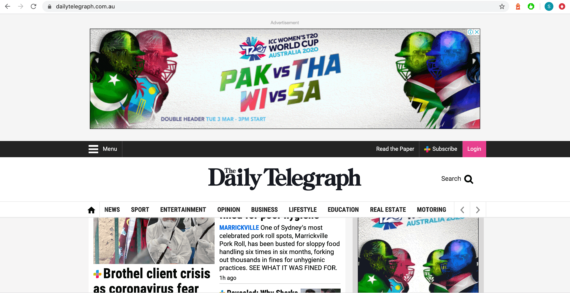
As you can see, without an ad blocker, ads are clearly visible on the Daily Telegraph page. In fact, they take up the majority of screen real estate.
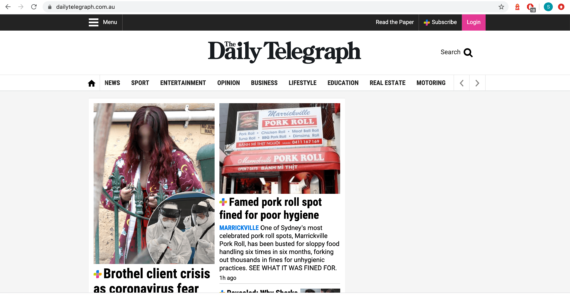
The same landing page with an ad blocker activated shows much more content as well as empty screen space.
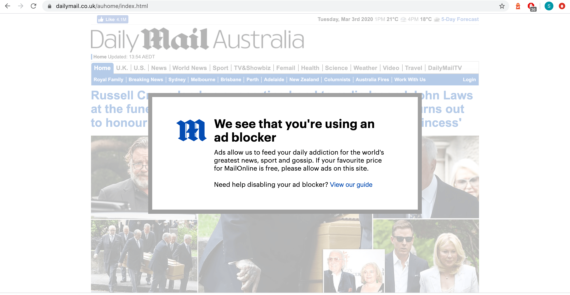
Many sites require advertising revenue to operate and have taken the step of blocking people from accessing a site with an active ad blocker.
The Impact of Ad Blocking on Marketing and Advertisers
So what digital marketing strategies can we use going forward to adapt and thrive in this new digital marketing landscape? To combat this rise in ad blockers, social media marketing and related spend has increased quite a bit, as the consumers are there and the channel still works for digital marketing as there is no technology in place to block digital marketing posts as yet. That said, the most valuable thing brands can do is invest in search marketing. When a user is going to Google and doing a search they are telling a brand exactly what they are looking for. If a brands ad appears at this time they are not interrupting the user’s journey but are instead enhancing it. 75% of customers say that paid search ads made it easier to find what they were after, and 63% of Internet users have clicked on a Google ad, making it a cost effective and powerful way to develop leads and make sales.
The Google Chrome ad blocker is an interesting development as it hints at what we need to do in order for traditional advertising to be a viable digital marketing strategy again. Rather than blocking all ads, the Chrome ad blocker instead targets ads that breach the Better Ads Standards. This service has already been rolled out as part of Chrome in North America and most of Europe and will be released globally at a later date. The Standards look at the least preferred desktop and mobile advertising experiences, such as full screen scrollovers, popups with a countdown and autoplay videos with sound and set the base standard around blocking the type of ads users dislike most. This may seem rather disheartening, but it also shows that there are ads that end users actually find useful and engaging. Sticking to those types of ads could circumvent s good deal of blocking and help build a brand identity free of any ill will from aggravating ads.
CHAT BOTS
Another idea that was raised at the Summit is that responsiveness is one of the key factors in converting an inquiry into a sale. According to one of the speakers, Jethro Grainger Marsh of Alsco, 10 years ago a fast response was same day, now we expect a response same hour. At small scale it may be possible for people to respond to queries in a timely manner, but when it comes to creating a conversion strategy based around customer experience, a chat bot can be an indispensable tool for rapid response to easy queries, and with training and sufficient AI can answer more complex inquiries in a timely manner.
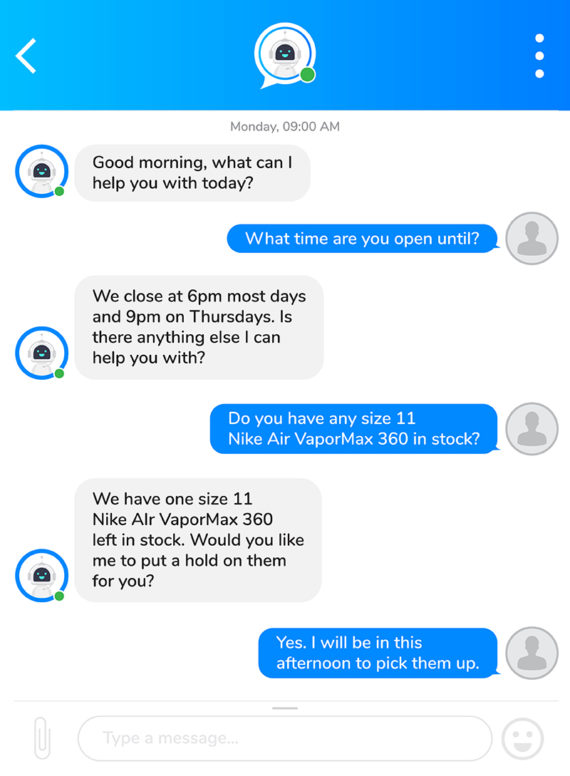
The simple fact is that between 35% and 50% of B2B sales go to the vendor that responds to inquiries first and the statistics for B2C sales skew even higher. Early in my career I started and ran a small inbound marketing call centre in the telco marketplace. We were very successful, but even back then, quick turnaround was key to sales conversions. Due to the small team and the nature of the work, the sales team was constantly making or taking calls so wouldn’t be able to take all incoming inquiries instantly. We responded to calls as quickly as possible, but often it wasn’t fast enough for the customer. What we discovered was that when we called the customer back, even an hour later we often found that they had already signed with another telco, or that we could not reach then when we attempted to call back and thereby lost the sale.
Given that being able to respond to a lead or an inquiry in a timely manner is key for sales conversion, what can we do to speed up the process? Kat Warboys, Head of Marketing for HubSpot suggests using live chat across key sales pages on your website and the use of chat bots to automate easy inquiries, such as answering FAQs, surface articles from the knowledge base (such as stock availability and location, opening and closing times and basic queries about products or services), assigning more complex queries to a live chat agent and pre-screening customers so the live agent can best serve them. 64% of Internet users say that 24-hour service is the best feature of chat bots, and given that online shops are always open, so taking advantage of an automated assistant that never needs sleep seems like a logical next step in any digital marketing plan.
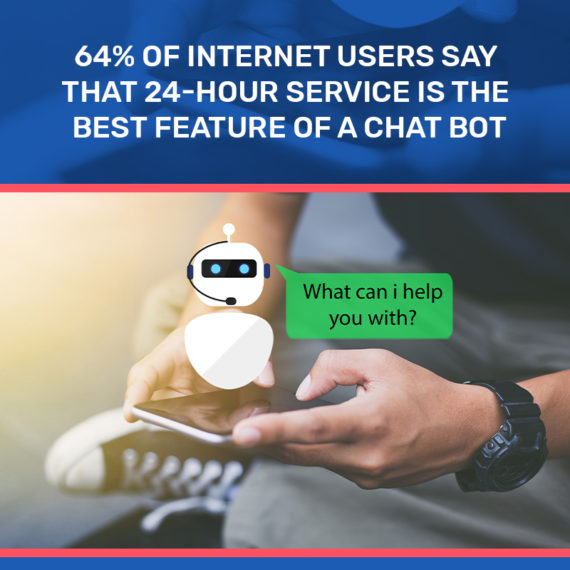
Rather than trying to hide the fact that you’re using a chat bot by giving it a name, Kat Warboys suggests that you embrace the fact that it is a bot and let that fact be known to avoid any confusion and frustration from customers.
Offsite chat – communication not facilitated through the website directly – should also be prioritised in your digital marketing strategy. Facebook Messenger, Whatsapp, Slack and Email all play a vital role in converting leads to sales. While email allows for more personalisation in messages, creativity in design and depth of communication, messenger services such as Facebook and Whatsapp allow for fast communication turnaround through chat bots, capable of answering simple enquiries and redirecting more complex inquiries to a live agent, much like their website based counterparts. Facebook Messenger is the most widely used chat platform in the world at the moment, with around 2.5 billion users as of Q4 2019, and Whatsapp closing in fast with 2 billion users, so leveraging this massive user base into your marketing strategy can be an important step forward. Messenger can boast a massive open and clickthrough rate from both live and chat bot generated messages, eclipsing those of email.
